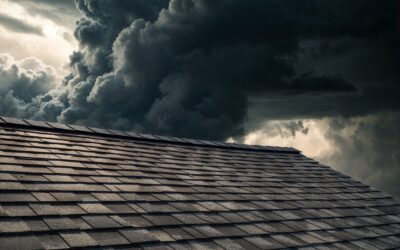Roofs, though often overlooked, are the unsung heroes of our homes, shielding us from the elements and ensuring our safety and comfort. However, with time and exposure to various weather conditions, even the sturdiest roofs can develop issues.
That’s why regular roof maintenance is not only advisable but essential to protect your property investment. By actively identifying and addressing common roofing issues early on, you can avoid costly repairs down the line and maintain the integrity of your home’s structure.
Importance of Regular Roof Maintenance
Regular roof maintenance is akin to preventive healthcare for your home. Neglecting routine inspections and necessary repairs can lead to a cascade of problems that could have been prevented with timely attention.
By investing in regular roof maintenance, you extend the lifespan of your roof while minimizing potential damage caused by leaks, structural weaknesses, or other issues. Moreover, a well-maintained roof enhances the overall aesthetic appeal of your property.
Overview of Common Roofing Issues
Roofing issues come in various forms but share one common trait: if left unaddressed for too long, they can escalate into major problems that will wreak havoc on your home’s interior and exterior structures. From leaks and water damage to shingle or tile problems and sagging roofs—each issue demands its own course of action to prevent further deterioration. Leaks are among the most prevalent roofing issues homeowners face.
They can originate from damaged flashing around chimneys or vents or be caused by cracked or missing shingles/tiles due to extreme weather conditions such as hailstorms or high winds. Additionally, clogged gutters may result in water backup under shingles/tiles that eventually seeps into your home.
Shingle or tile problems encompass a range of concerns such as curling due to factors like age or improper installation techniques; cracking resulting from hailstorms or extreme temperatures; and missing shingles/tiles that can be attributed to severe storms or poor workmanship during installation. Sagging roofs indicate potential structural weaknesses, which could be caused by an insufficient support structure or the accumulation of excessive weight from heavy snowfall.
Identifying and addressing these common roofing issues promptly is crucial to preventing further damage and preserving the longevity of your roof. In the following sections, we will delve into the specifics of how to identify each issue and outline the appropriate steps for fixing them.
Identifying Roofing Issues
Visual inspection from the ground
Undoubtedly, the first step in identifying potential roofing issues is through a thorough visual examination. Begin by standing a safe distance away from your home and surveying your roof’s overall condition. Look for any missing or damaged shingles or tiles, which could be indicative of wear and tear or harsh weather conditions.
These vulnerable areas can allow water to seep into your home, leading to costly damage if left unaddressed. Additionally, keep an eye out for any sagging or unevenness in the roofline, as this can signify underlying structural issues that must be promptly repaired to avoid further deterioration.
Look for missing or damaged shingles/tiles
While observing your roof from afar, pay close attention to any visible signs of missing or damaged shingles or tiles. These imperfections may occur due to age, intense weather events like storms or hailstorms, improper installation techniques, or even poor workmanship during previous repairs. Even a single compromised shingle can compromise the integrity of your entire roofing system and pave the way for leakage and subsequent water damage.
Check for signs of sagging or unevenness
Sagging is an alarming sign that warrants immediate attention as it often indicates structural weaknesses within your roof’s support system. The root causes can vary from inadequate construction materials to excessive weight accumulation such as heavy snowfall. An uneven appearance should also raise concerns about potential underlying issues that might accelerate the wear and tear process if not rectified promptly.
Inspect flashing around chimneys and vents
Flashing plays a crucial role in preventing water intrusion at vulnerable areas such as chimneys and vents. Over time, flashing may deteriorate due to exposure to harsh weather conditions like extreme temperatures and heavy rainfall.
When inspecting your roof from the ground, pay close attention to these vital areas. Look for any signs of corrosion or damage in the flashing material that could compromise its ability to effectively seal against water infiltration.
Climbing onto the roof for a closer look
While visual inspections from the ground provide valuable insights, climbing onto the roof allows for a more thorough evaluation of potential issues. However, it is essential to prioritize safety when ascending to your rooftop.
Use proper safety equipment and precautions
Before venturing onto your roof, ensure you have appropriate safety equipment on hand. This includes sturdy footwear with non-slip soles, a properly secured ladder, and a safety harness if necessary.
Take cautionary measures by checking weather conditions beforehand and avoiding climbing on wet or icy roofs. If you are uncomfortable with heights or lack experience in roof inspections, consider contacting a professional roofer who can conduct a comprehensive examination on your behalf.
Examine the condition of shingles/tiles up close
Once safely positioned on your roof, examine each individual shingle or tile up close to identify any potential issues that may not be visible from below. Look out for signs of curling, which can occur due to natural wear and tear over time or improper installation techniques. Cracking is another common concern caused by hailstorms, strong winds, or extreme temperatures that compromise the material’s integrity.
Moreover, inspect asphalt shingles specifically for granule loss as this indicates aging and potential deterioration of their protective coating. By thoroughly examining your roof both from afar and up-close using these techniques outlined above will enable you to detect possible roofing issues early on and take appropriate actions before they escalate into major problems requiring expensive repairs or replacements.
Common Roofing Issues and Their Causes
Leaks and water damage
One of the most common roofing issues that homeowners encounter is leaks and subsequent water damage. These can occur due to various reasons, including damaged flashing or deteriorated sealant around penetrations such as chimneys, vents, or skylights. Over time, the flashing can become corroded or lose its effectiveness, allowing water to seep into the vulnerable areas of your roof.
Similarly, cracked or missing shingles/tiles can create openings for water to infiltrate. Additionally, clogged gutters pose a serious risk as they prevent proper drainage of rainwater from the roof, leading to overflow and potential leaks.
Shingle/Tiles problems
Another set of common roofing issues lies within the realm of shingles/tiles. Curling is often observed in roofs with older asphalt shingles due to natural aging processes, exposure to excessive heat, or improper installation techniques.
When shingles curl upwards at their edges and corners, they become susceptible to moisture penetration and wind uplift during storms. Cracking is often caused by severe weather conditions like hailstorms or strong winds that chip away at the protective outer layer of shingles/tiles.
Moreover, extreme temperatures can result in expansion and contraction cycles that weaken their structural integrity over time. Furthermore, missing shingles/tiles are frequently a consequence of storms but can also be attributed to poor workmanship during initial installation.
Sagging roof
A sagging roof is a serious issue that requires immediate attention as it indicates underlying structural problems. A weak support structure is one main cause for this phenomenon; over time, wooden beams may rot due to moisture infiltration or termite infestation weakening their load-bearing capacity.
Additionally, excessive weight from snow accumulation during winter months can exert pressure on the roof’s structure beyond its intended limits, causing sagging to occur. These issues need to be promptly addressed by a professional roofer to prevent further damage and potential collapse of the entire roof structure.
By examining these common roofing issues and their underlying causes, homeowners can better understand the importance of regular roof maintenance and early detection. Addressing these problems in a timely manner is crucial for preventing major damage, saving costs, and ensuring the longevity of your roof.
Fixing Roofing Issues in a Timely Manner
Hiring a professional roofer vs. DIY repairsWhen it comes to addressing roofing issues, the decision between hiring a professional roofer or attempting DIY repairs can be crucial. While some minor repairs can be tackled by homeowners with adequate skills and experience, it is essential to recognize your limitations and consider the safety risks involved. Professional roofers possess specialized knowledge, tools, and expertise to handle diverse roofing problems efficiently. They are well-versed in industry standards and can ensure that the repair work is done accurately and safely.
Know your limitations and safety risks
Undertaking any roofing repair as a DIY project requires an honest assessment of your capabilities. Working at heights presents inherent dangers, and without proper safety measures, accidents can occur.
Moreover, lack of experience or familiarity with roofing materials could lead to inadequate fixes that may exacerbate existing issues or result in further damage. It’s crucial to prioritize personal safety above all else and engage professional help when necessary.
Consider cost-effectiveness and warranty benefits
While hiring a professional roofer may involve upfront costs, it is essential to consider the long-term cost-effectiveness of their services. Professionals bring valuable knowledge about durable materials, efficient techniques, and industry best practices which contribute to longer-lasting repairs that minimize recurring expenses over time. Additionally, reputable roofing contractors often provide warranties on their workmanship, giving homeowners added peace of mind knowing that any unforeseen issues will be addressed promptly without additional financial burden.
Addressing leaks and water damage
Identifying leaks and addressing water damage should be top priorities when it comes to maintaining your roof’s integrity. Leaks can lead to extensive structural damage if left unattended for too long.
When faced with visible signs of water infiltration inside your home, such as stains on ceilings or walls, it is crucial to act swiftly. Engaging a professional roofer can help identify the source of the leak accurately.
They will assess damaged flashing, deteriorated sealant around penetrations, cracked or missing shingles/tiles, and clogged gutters that may be causing water backup. The roofer will then provide efficient solutions to fix the issues promptly and prevent further damage.
Conclusion
Staying proactive in spotting and addressing common roofing issues before they transform into major problems is essential for maintaining the longevity and safety of your roof. While some repairs can be accomplished through DIY efforts, it is crucial to recognize one’s limitations and prioritize personal safety above all else. Hiring a professional roofer brings numerous advantages in terms of expertise, efficiency, and cost-effectiveness over time.
By addressing leaks and water damage promptly with professional assistance, homeowners can mitigate potential structural damage and ensure the longevity of their roofs. Remember that investing in regular maintenance ensures peace of mind while protecting one of our most valuable assets – our homes.



